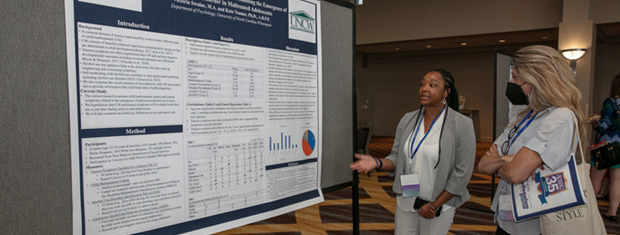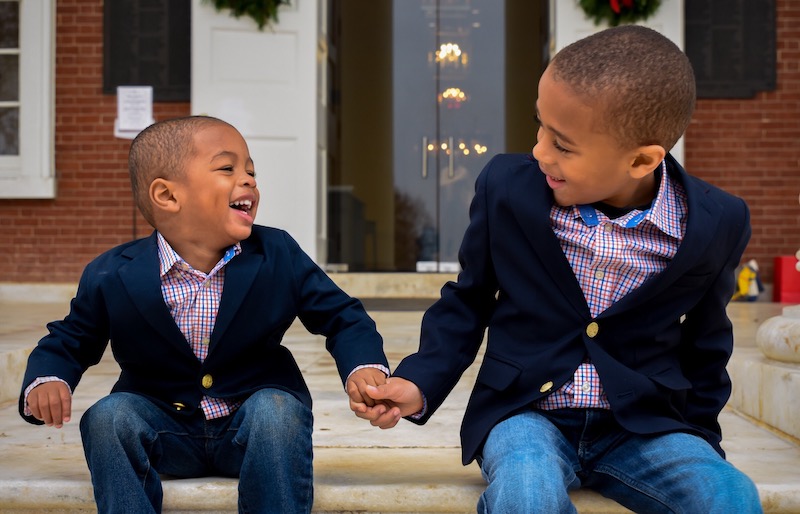




The APSAC Advisor is a peer reviewed quarterly news journal for professionals in the field of child abuse and neglect.
The APSAC Advisor provides succinct, data-based, practice-oriented articles that keep interdisciplinary professionals
informed of the latest developments in policy and practice the field of child maltreatment. It is designed to highlight
best practices in the field and publish original articles and current information about child maltreatment for professionals
from a variety of backgrounds including medicine, law, law enforcement, social work, child protective services, psychology,
public health and prevention in the U.S.
 If you wish to learn more about submitting an article to the Advisor, please click here.
If you wish to learn more about submitting an article to the Advisor, please click here.
This library contains Advisor issues dating back to the first issue in 1988. The most recent issue appears at the top.
Scroll down to select past issues by year and issue number. Once a publication appears in the box, you
can use the Enlarge button to open the document in a new window or tab (depending on how your browser is set up).
This will allow you to view the document with larger print.
To print a document, first use the Enlarge button to open the document in a new window or tab. Then use your browser's Print command.
To return here from a new tab, close the tab. To return from a new window, click your browser's Back button.
In the listing below, click on a year and issue number to see the articles in that publication.
1994 Number 4
Perspectives of the U.S. Advisory Board on Child Abuse and Neglect
In 1990, the US Advisory Board on Child Abuse and Neglect declared the maltreatment of children to be a national emergency. The Board presented 31 critical steps in response to the tragic reality that each year, hundreds of thousands of our nation's children are "starved and abandoned, severely burned and beaten, raped and sodomized, berated and belittled." They are also killed.
History and Status of Child Death Review Teams: Not Mending Walls
Multi-agency, multidisciplinary, child death review teams have expanded rapidly in the last five years, essentially without money or mandate.
Child Death Review Teams in Action
One response to the problem of abuse-related child fatalities has been the establishment of child death review teams at the state and/or local level. Currently, 39 states have state and/or local child death review boards or teams which investigate child abuse and neglect related deaths.
Firearms: A Culture of Violence
Children are being killed at alarming rates. In 1993 in the Chicago area, 61 children under the age of 15 were slain. Half were younger than four years old; they were most often victims of child abuse. The single most common cause of death was from gunshot injuries (30 of 61 victims). Other causes included beating, burns, strangling, and drowning (Chicago Tribune, 1994)
Profound emotions are aroused when an infant dies. When an infant who was previously healthy and apparently normal dies unexpectedly and suddenly, the resulting anguish sweeps over a family in a tidal wave of grief, helplessness, doubt, suspicion, guilt, and anger.
It is important for pediatricians treating abused and neglected children to be knowledgeable in unintentional as well as intentional injuries. Understanding patterns of normal childhood injury helps us recognize the exceptional patterns that result from abuse.
The leading cause of death among abused children is head injury. Estimates of the actual prevalence of child abuse-related head injury are imprecise and probably artificially low owing to difficulties in diagnosis, reporting, and case finding.
Thoraco-Abdominal Trauma in Child Abuse
Inflicted thoracoabdominal injuries are relatively uncommon but represent a serious source of morbidity and mortality in childhood (Cooper et al., 1988; Peclet et al., 1990). Blunt thoracoabdominal trauma accounts for the majority of injuries.
Falls and Childhood Deaths: Sorting Real Falls From Inflicted Injuries
This article reviews the literature on children's falls, with emphasis on the contribution of falls to childhood death, and will also include a practice guideline for physicians dealing with fatally injured children with fall histories.
The Role of Law Enforcement in Fatal Child Abuse Cases
A child's death places unique demands on law enforcement, The investigator's role is to investigate the death thoroughly and determine how it happened, if a crime occurred, and if so, who is responsible.
Prosecuting Child Fatality Cases
Most prosecutors, investigators, and physicians are ill-prepared to recognize or deal with abuse-related fatalities. Among the many obstacles facing prosecutors is the need to prosecute and obtain appropriate sentences for perpetrators within a framework of state statutes that do not always take account of the dynamics of abuse-related deaths
The Role of Child Protective Services in Responding to and Preventing Child Deaths
The National Center on Child Abuse and Neglect (NCCAN) (US Department of Health and Human Services, 1994) reports that 1,068 child deaths were known to child protective service (CPS) agencies in 1992 (44 states reported fatality data for that year).
Discrimination De Jure: Religious Exemptions for Medical Neglect
Laws that discriminate against certain classes of adults are rare in the United States today. They offend the American spirit of fairness But a large body of laws that discriminate against certain classes of children is accepted as perfectly normal by most policy makers and the child welfare bureaucracy.
Parents have a duty to their children When a parent omits to carry out that duty and the child dies as a result, the child is said to have died in circumstances of fatal neglect. Obviously, parents cannot prevent all fatal events that might befall their children and they are not legally held to a standard of perfect care.
To discuss and analyze a topic as emotional and complex as sexual homicide of children is not an easy task. Good, reliable research and data are hard to find Americans tend to have stereotypical concepts about the innocence of children and the malevolence of those who victimize them.
Perpetrators of Fatal Child Maltreatment
Each day in the United States, three to four children die as a result of a repetitive pattern of maltreatment (e.g., Daro, 1987). Homicide is among the five leading causes of death in children in the United States, and is high in comparison to other industrialized nations (Christoffel and Liu, 1983)
The Rest of the Story: Psychosocial Issues
Elizabeth Kubler-Ross made death an official part of social science with her 1969 book, On Death and Dying (Kubler-Ross, 1969). We have learned something about unavoidable natural child death since the publication of that book. We have not learned how to address the helpless rage that comes with the violent death of a child, particularly at the hands of a caretaker
Preventing Child Abuse Fatalities: Moving Forward
Until the last century, children tended to die before attaining adulthood. With improvements in sanitation and better food supplies, life expectancy and the likelihood that children would become adults dramatically improved. A strong argument could be made that child abuse and other causes of child death could only be addressed when the great plagues and epidemics of the past were brought under control, and children were more highly valued.
The purpose of Journal Highlights is to alert readers to current literature on child abuse. Selected articles from journals representing the variety of disciplines reflected in APSAC's membership are presented in the form of an annotated bibliography.
APSAC Advisor 7(4): Full Issue